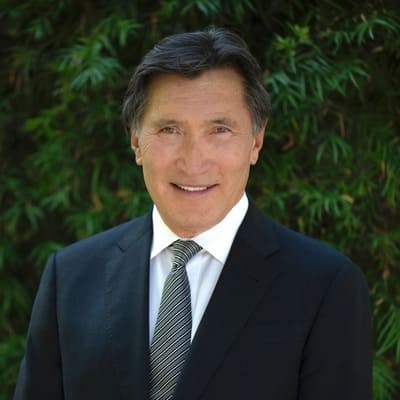Blog
Deciding between long-lasting solutions like plastic surgery or shorter-term ones like Botox is a highly personal decision that depends on individual expectations, desired outcomes, and emotional health considerations. Many people eventually choose plastic surgery for its many benefits, including enhanced self-confidence and body image.
Despite significant changes in societal opinions, a common myth still exists that only insecure people get plastic surgery. However, as the best plastic surgeon will tell you, that’s a simplistic view that doesn’t encompass the many reasons people invest in cosmetic surgery procedures. Aside from people who undergo plastic surgery for functional hearing after accidents, injuries, or surgeries like mastectomies, the procedures are, for many others, a healing process that goes far beyond physical appearance.
The Emotional Impact of Physical Appearance
In a society that emphasizes physical attractiveness, self-esteem and confidence can suffer in those who feel they don’t live up to conventional expectations. Though advertisers have long exploited consumer self-doubt to market their products, today we’re bombarded from every angle by “influencers.” These videos and ads feature non-stop images and messages that shape and often distort self-image and worth, making external appearance an even greater focal point of personal validation and societal acceptance.
Understanding the Connection Between Body Image and Self-Confidence
Experts have long known about the profound link between self-confidence and body image. And research shows that, when chosen for appropriate reasons, plastic surgery can significantly bolster self-esteem. There are countless cases, including among the famous, where cosmetic surgery has improved a person’s life. For instance, actress Lisa Kudrow, best known for her role as Phoebe on Friends, told Harper’s Bazaar in an interview that having rhinoplasty at the age of 16 was positively “life-altering.” Like many young people, she felt ugly, and it was affecting all areas of her life. Having plastic surgery helped improve her confidence and outlook on life.
Plastic Surgery and Improved Self-Perception
The truth is plastic surgery can be pivotal in addressing someone’s perceived flaws and physical insecurities. Carefully chosen and executed surgical enhancements can be genuinely transformative, aligning a person’s external appearance with their internal desires and fostering a sense of self-assurance and satisfaction.
Empowerment Through Choice
Whatever your choice of cosmetic procedure, it can be an empowering decision that epitomizes autonomy over your body, appearance, and well-being. The psychological benefits can be significant, provided:
- You have realistic expectations for the surgery’s results.
- Understand that confidence comes from within.
- Your decision is rooted in personal goals, not external pressures.
Guidance from a skilled plastic surgeon in making an informed choice can further ensure the likelihood of a positive, empowering experience that goes far beyond the surface.
Find the Best Plastic Surgeon in Napa
If you’re ready to take the next step in increasing your confidence through plastic surgery, talk to one of the experienced surgeons at Napa Solano Plastic Surgery today. As the leading board-certified plastic surgeons in the San Francisco North Bay, they’ll help you make an informed choice that reflects your aspirations and enhances your overall well-being.
To get started, schedule a personal consultation online or call (707) 258-6053.
Blog
Many people decide to invest in plastic surgery when they begin to notice signs of aging on their face or body. Learning more about the aging process itself can help you better understand plastic surgery’s capabilities and limitations in reversing time’s effects. For while plastic surgery is an effective solution for addressing signs of aging, it does not halt cellular changes in our bodies.
Whether you’re interested in getting a facelift, neck lift, or breast augmentation, consulting with a board-certified cosmetic surgeon at Napa Solano Plastic Surgery ensures you’re working with the best plastic surgeon for your needs.
The Science of Aging
As our bodies age, skin loses elasticity, collagen production slows down, and fat distribution changes. How extensive each person’s aging process is greatly influenced by their genetic makeup and external environmental factors, like sunlight and pollution exposure. Lifestyle choices can also have an effect. Smoking, a lack of exercise, and a poor diet can further exacerbate the aging process, impairing your skin’s natural ability to keep your skin smooth and firm.
Common Signs of Aging
The natural aging process manifests in various ways and can include:
- Fine lines and wrinkles around the eyes, mouth, and forehead, which are often the first visible signs of aging.
- Loss of skin elasticity leading to sagging, especially in the neck, cheeks, and jawline.
- Volume loss as fat distribution shifts, resulting in sunken eyes, hollowed cheeks, and thinning lips.
- Age spots and hyperpigmentation that often appear on the face, hands, and body after years of sun exposure.
- Dry and thinning skin as the skin loses its ability to retain moisture.
Plastic Surgery As a Solution
Plastic surgery procedures like facelifts, eyelid surgery, and dermal fillers can successfully address signs of aging and rejuvenate your appearance. They offered tailored solutions that, thanks to advanced techniques and technologies, ensure natural-looking results. Whether you want to eliminate sagging skin, deep wrinkles, or volume loss, cosmetic surgery can be the solution you’re looking for.
Risks and Benefits
While it offers transformative results, like all surgeries, plastic surgery is not without risks. Complications, unhappiness with outcomes, and extended recovery times are potential issues for some patients. However, you can greatly reduce these and other risks by choosing a board-qualified surgeon who will guide you on what to expect and reassure you of your procedure’s safety and efficacy.
Lifestyle Choices and Maintenance
Achieving optimal results isn’t merely about the plastic surgery itself. Maintaining a healthy lifestyle that includes a balanced diet and regular exercise and skincare can boost surgical outcomes and ensure long-lasting effects.
Choose the Best Plastic Surgeon for Your Needs
Selecting the best plastic surgeon for your procedure ensures a positive and stress-free experience. Napa Solano’s skilled team prioritizes patient care and safety, offering personalized consultations that address individual needs and concerns. Our reputation for excellence, combined with state-of-the-art facilities and techniques, guarantees unparalleled service and results.
We invite you to schedule an appointment to learn more about all the services we provide.
Blog
Plastic surgery has long been considered a feminine pursuit, and for the most part, it is. Still, the American Society of Plastic Surgeons estimates that about 15% of all cosmetic surgeries are now performed on men. What’s driving this change? Is there anything men need to keep in mind when choosing plastic surgery?
Napa Solano provides all its patients, male and female, with exceptional cosmetic surgery services in state-of-the-art surgical facilities. We believe everyone should look and feel their best!
Why is Cosmetic Surgery for Men Rising in Popularity?
Everyone wants to look in the mirror and like what they see. Beyond that, experts say there are several reasons more men are choosing plastic surgery.
- It’s become more common for men in the workplace to be discriminated against for their age.
- The stigma attached to male plastic surgery has lessened.
- Men are more targeted and affected by advertisers, influencers, and celebrities.
Common Cosmetic Surgery Procedures for Men
The five most popular male cosmetic surgical procedures in the US are nose reshaping (rhinoplasty), eyelid surgery, cheek implants, liposuction, and ear surgery. Gynecomastia reduction (breast reduction) and neck lift procedures are also on the rise. Men tend to gravitate to these procedures because they get immediate results without much downtime. They’re also getting more non-invasive procedures such as fillers, Botox, and microneedling.
Specialized Techniques
Whether the goal is to refine a face or body feature, most men seeking plastic surgery want to retain their masculine appearance without seeming “done.” That makes it critical to find a plastic surgeon with extensive experience working with male patients. The surgeons at Napa Solano Plastic Surgery are skilled at achieving the most natural-looking results that address their male patients’ concerns.
Celebrity Influence
While the positive societal shift in attitudes toward male self-care has played a significant role, there’s no denying that the rise of social media influencers and candor of Hollywood celebrities has also persuaded men to always look their best. This trend can be viewed as positive when you consider how it challenges traditional gender norms and promotes a more holistic view of masculinity.
What to Expect
Like all surgical procedures, male plastic surgery carries inherent risks like infection, anesthesia complications, and scarring. However, the likelihood of complications is minimized when the work is performed by a certified, experienced surgeon. As the recovery phase is crucial to a positive outcome, patients should carefully follow their surgeon’s post-operative instructions, including attending follow-up visits.
Book A Consultation Today
If you’re a male interested in pursuing cosmetic surgery, the team at Napa Solano Plastic can help you achieve your aesthetic goals. Take the first step toward a more confident and youthful-looking you by scheduling an appointment with one of our surgeons today. During your meeting, you’ll have the chance to explain your hopes and concerns and ask any questions you might have. Together, we can craft a personalized plan that aligns with your vision and prioritizes your well-being.
Blog
Most people opting for plastic surgery fall into two groups: those who need it to treat a health condition and those who want to enhance their appearance. For instance, a breast reduction can help relieve back pain, and rhinoplasty can reduce the size of a large nose.
Whatever your reason for choosing plastic surgery, we understand that it’s a deeply individual choice that often requires much reflection and deliberation. The board-certified plastic surgeons at Napa Solana Plastic Surgery take a compassionate approach to helping patients decide whether plastic surgery is right for them. Our distinctive blend of empathy and attention creates a nurturing environment where you feel confident about your decision.
From complete mommy makeovers to transformative facelifts, we’re here to guide and support you every step of the way.
Making Up Your Mind: Is Plastic Surgery Right for You?
If you’ve been on the fence about whether plastic surgery is right for you, you’re in good company. We hope this post will help you better understand the essential factors to weigh so you can make an informed decision that aligns with your goals and desires.
No matter which type of plastic surgery procedure you’re considering, these three factors should be top-of-mind.
- Personal motivation and expectations. Spend some time reflecting on your reasons for wanting plastic surgery. Is it a personal desire, or are you responding to external pressures? Are your expectations realistic? Do you understand that while cosmetic surgery can enhance your appearance, it doesn’t entirely transform your life or solve underlying emotional or psychological issues?
- Risks and benefits. Every surgical procedure has risks. Your surgeon can help you understand any potential complications associated with your surgical choice. You can then assess the benefits and risks before making up your mind.
- Finding a qualified and experienced surgeon. The surgeon you choose is critical to your safety and achieving your desired results. Look for a board-certified plastic surgeon specializing in your procedure and research their reputation, experience, and qualifications.
The Personal Journey: Addressing Your Hopes and Concerns
As mentioned above, exploring your motivations and expectations plays a pivotal role in electing to undergo plastic surgery.
Whether you’re motivated by a desire to achieve a more youthful appearance or want to enhance your body’s proportions, talking with a board-certified cosmetic surgeon can help you dive deeper into your thoughts and emotions, providing a roadmap for your decision-making process.
For instance, are you hoping for instant and permanent results from your procedure? That’s just one of the many misconceptions people have about plastic surgery. Patients are often concerned about the recovery process, even if they’re undergoing a relatively simple procedure like a mini-facelift.
Napa Solano Plastic Surgery’s surgical team provides comprehensive one-on-one consultations that reflect your unique goals, concerns, and motivations. They listen attentively to your hopes and help you set realistic expectations. They also address any concerns or fears you might have about the procedure, anesthesia, and recovery, providing honest and transparent information that should alleviate your worries.
Crafting Your Transformation: Tailored Procedures at Napa Solano Plastic Surgery
Each patient’s plastic surgery journey is unique. Based on their years of experience and expertise, our surgeons recommend procedures tailored to your specific preferences and needs. They also discuss available alternatives so you can choose the one will help you achieve your desired results.
Some of the most popular procedures patients consult us on include:
- Breast augmentation. One of the most common cosmetic procedures performed worldwide, breast augmentation (aka augmentation mammoplasty), is a surgical procedure that enhances the size and shape of your breasts. It can involve saline or silicone implants or, in some cases, fat transfer to increase breast volume and achieve the desired outcome.
- Mommy makeovers. Most women experience body changes during pregnancy and after giving birth. Some are minor and can be addressed with non-surgical treatments like Botox, dermal fillers, and laser therapy. However, others are more extensive and require one or more cosmetic procedures. The procedures vary based on each person’s goals and concerns, but the most common are breast enhancement, abdominoplasty, liposuction, and body contouring.
- Facelift. Medically known as a rhytidectomy, a facelift improves visible signs of aging in the face and neck, addressing sagging skin, deep wrinkles, and other facial changes. By tightening underlying tissue, repositioning fat, and removing excess skin, your surgeon helps create a more youthful and refreshed appearance. Modern facelift techniques prioritize natural-looking results that enhance your features without appearing overdone.
Beyond the Surface: Embracing Change and Confidence
Plastic surgery doesn’t only entail physically transforming your face or body. It’s also about boosting your confidence and self-esteem.
Here’s how the decision can contribute to a more positive self-image.
- Improved body image. One of the greatest benefits of plastic surgery is how it can align your external appearance with your internal self-perception. The result is a more positive body image and a reduction in self-criticism. You feel more at ease in your own skin.
- Emotional well-being. People who are unhappy or dissatisfied with their appearance often suffer emotionally. While cosmetic surgery is not a cure-all for psychological challenges, it can help alleviate negative emotions and self-consciousness, leading to greater emotional well-being and a more positive outlook on life.
- Personal empowerment. Taking control of your appearance with plastic surgery empowers you to actively shape your life, giving you a greater sense of autonomy and agency and enhancing your self-worth.
- Improved social interactions. When you feel good about how you look, it can positively impact how your interact with others. You might become more comfortable conversing and forming new relationships, leading to an enriched social life.
- Personal growth. Introspection, self-discovery, and a commitment to self-improvement all play a role in deciding whether to undergo plastic surgery. This journey can lead to a more profound understanding of your needs and wants, fostering a positive sense of identity.
- Putting yourself first. Choosing cosmetic surgery reflects a commitment to self-care, a mindset that can extend to adopting a healthier lifestyle.
- Overcoming limiting beliefs. If you’ve spent years carrying negative beliefs about your appearance, plastic surgery can help you overcome them and allow you to acknowledge and embrace your uniqueness and self-worth.
- Long-term satisfaction. Achieving desired aesthetic goals through cosmetic surgery can lead to a sense of contentment that, combined with increased self-esteem, has a positive impact on every area of your life.
How to Choose the Best Plastic Surgeon
Approaching plastic surgery with careful consideration, open communication, and guidance from qualified professionals can ensure your procedure contributes to a more positive self-image that extends far beyond the surface.
When choosing a plastic surgeon, consider these factors as you narrow your choices:
- Is the surgeon board certified by the American Board of Plastic Surgery (ABPS)?
- Do they have extensive experience in performing your chosen procedure?
- Are they willing to share before and after photos?
- Is the surgical facility accredited by industry-recognized organizations like the AAAASF (American Association for Accreditation of Ambulatory Surgery Facilities, the AAAHC (Accreditation Association for Ambulatory Health Care), and the Joint Commission?
The good news is that, for most patients, there’s no need to rush the plastic surgery decision. Take your time, schedule a personal consultation, and visit the facility or surgery center where your procedure will take place before making up your mind. Remember, the process is about empowering you to make an informed choice that aligns with your unique aspirations and contributes to your overall well-being!
Blog
Becoming a mother can be one of life’s most rewarding experiences for many women. But there’s no denying it can also be extremely challenging, especially if giving birth has resulted in body changes that negatively impact your confidence and self-esteem.
If you’re struggling to get back to your former appearance post-pregnancy, a “mommy makeover” at Napa Solano Plastic Surgery can help you feel more confident in how you look and feel.
Mommy Makeovers: Maximum Results with Minimal Downtime
A mommy makeover is a cosmetic surgery procedure that addresses your body’s unique physical changes after pregnancy and childbirth. It typically includes a tummy tuck and breast augmentation or breast lift, with some women opting for additional treatments like liposuction.
By targeting specific areas affected by pregnancy, a mommy makeover helps you regain your previous physical appearance, resulting in a confidence boost you can’t always get with exercise and diet alone.
Life-Enhancing Benefits of a Mommy Makeover
A mommy makeover provides numerous advantages to a new mother. It helps restore breast shape and size, tones abdominal muscles, and eliminates stubborn pockets of fat. Beyond physical benefits, you’ll also enjoy:
Improved Emotional Well-being
Many women are emotionally impacted by the changes that accompany pregnancy. A mommy makeover contributes to emotional well-being, restoring your body to where you look and feel more confident in your clothes and more in control of your self-image.
Positive Impact on Relationships
The surge of newfound confidence that follows a mommy makeover can ripple out to your relationships with family and friends. As you begin to feel more content with your body, you’re able to forge stronger bonds, enriching the fabric of each relationship.
Enhanced Self-esteem
Pregnancy and childbirth frequently take a toll on a woman’s body and self-esteem. The transformative effects of a mommy makeover foster can boost self-assurance, enhance physical well-being, and contribute to emotional healing.
Schedule a Mommy Makeover With Napa Solano Plastic Surgery Today
Once you become a mom, it’s natural to focus your time and energy on your child’s needs and wants. While it’s understandable that you want to do everything you can to raise a happy, healthy child, doing something solely for yourself can actually strengthen the bond between you.
Investing in a mommy makeover helps put your needs front and center. Whether you want to firm sagging breasts, remove excess skin, or eliminate stubborn fat, Napa Solano’s personalized approach to cosmetic surgery empowers you to embrace the best version of yourself—inside and out—providing a newfound radiance that resonates in every aspect of your life.
If you’re ready to restore your body and confidence to their pre-pregnancy state, contact us today to schedule a consultation with one of our board-certified plastic surgeons. And why not plan a relaxing facial or other skin rejuvenation treatment at our MediSpa at the same time? There’s no easier way to feel pampered, refreshed, and ready to take on life!
Blog
Wanting to look your best shows just how much you value self-care and confidence. Intentional aging, or aging gracefully, is a growing trend for people who wish to improve their skin’s condition and achieve a more youthful appearance without cosmetic surgery.
Napa Solano offers a range of natural and safe non-surgical approaches to enhance your appearance, including dermal fillers, laser therapies, facials, and Botox. Our team of experienced professionals will tailor a treatment plan to your unique needs, addressing specific aging concerns and ensuring you look and feel your best.
What Causes Our Skin to Age?
Depleting collagen and elastic levels are two significant facts in aging skin. Throughout our younger years, these proteins give skin its elasticity and structure. However, as we age, our bodies produce less of them, leading to wrinkles and sagging skin. Sun damage and lifestyle choices can also cause aging skin, resulting in fine lines, age spots, and a dull, dry complexion.
Facials, Botox, and More: Alternatives to Cosmetic Surgery
Unlike surgical interventions, non-invasive treatments typically require minimal downtime. You can usually return to your daily activities with little to no disruption to your daily routine.
Non or minimally-invasive treatments we offer at Napa Solano include:
- Botox works by blocking signals from your face’s nerves to its muscles. This technique relaxes the muscles, reducing the appearance of wrinkles, crow’s feet, and forehead lines. It can also help prevent new wrinkles from forming.
- Hydrafacials rehydrate your skin using exfoliation, cleansing, extraction, and hydration techniques that deliver near-immediate results.
- Dermal fillers are one of the most popular treatments for younger-looking skin. A great way to turn back the clock, most fillers last anywhere from six months to two years. And because they use a substance already present in the body, there’s little risk of an allergic reaction. They’re a great choice for enhancing lips, cheeks, crows feet, and smile lines.
- Laser therapies reduce the appearance of fine lines, eliminate wrinkles, and make your skin appear brighter, firmer, and fuller. Treatments, which use high-energy beams of light to stimulate cell turnover, generally take an hour or less and are ideal for making face, hands, chest, and neck skin more vibrant.
No matter which non-surgical treatments you choose, consulting with a qualified professional ensures a safe and effective treatment.
Intentional Aging Treatments From Napa Solano
Napa Solano is Napa Valley’s #1 choice for patients who want long-lasting results from their non-invasive skin treatments. Our skilled aestheticians deliver exceptional services that help increase your confidence as you embrace the process of aging through non-surgical means.
Talk to one of our staff members today about all your skincare treatment options. We look forward to helping you create a personalized plan that supports your journey toward a natural and refreshed appearance, no matter your age.
Page 3 of 12«12345...10...»Last »




